In the past month, DroneUp has had the honor of working with Virginia’s Center for Innovative Technology, UPS, and other big-name players in the drone industry to see just how far today’s technology and regulations could carry us in pandemic response. The multi-pronged experiment—spurred by requests from federal and state agencies—aimed to collect vital data on how readily available drone systems could deliver supplies into quarantined areas.
Operation Last Mile came to be a great success, thanks in large part to the talented drone operators brought in to pilot the custom-fitted DJI Inspire 2s throughout the campus of the defunct St. Paul’s College in Lawrenceville, Virginia. Each of the operators below are in the DroneUp network and traveled to Brunswick County for a chance to help their communities.
Howard Sykes
DroneUp Callsign: hsykesphoto
Badges: Aerial Mapping, Airdata Pro, DJI Pro, Drone Registration, FEMA ICS 100, FEMA ICS 200, FEMA ICS 700, Insurance Verified, NC Operator, Part 107 Certified, Responsible Community Pilots
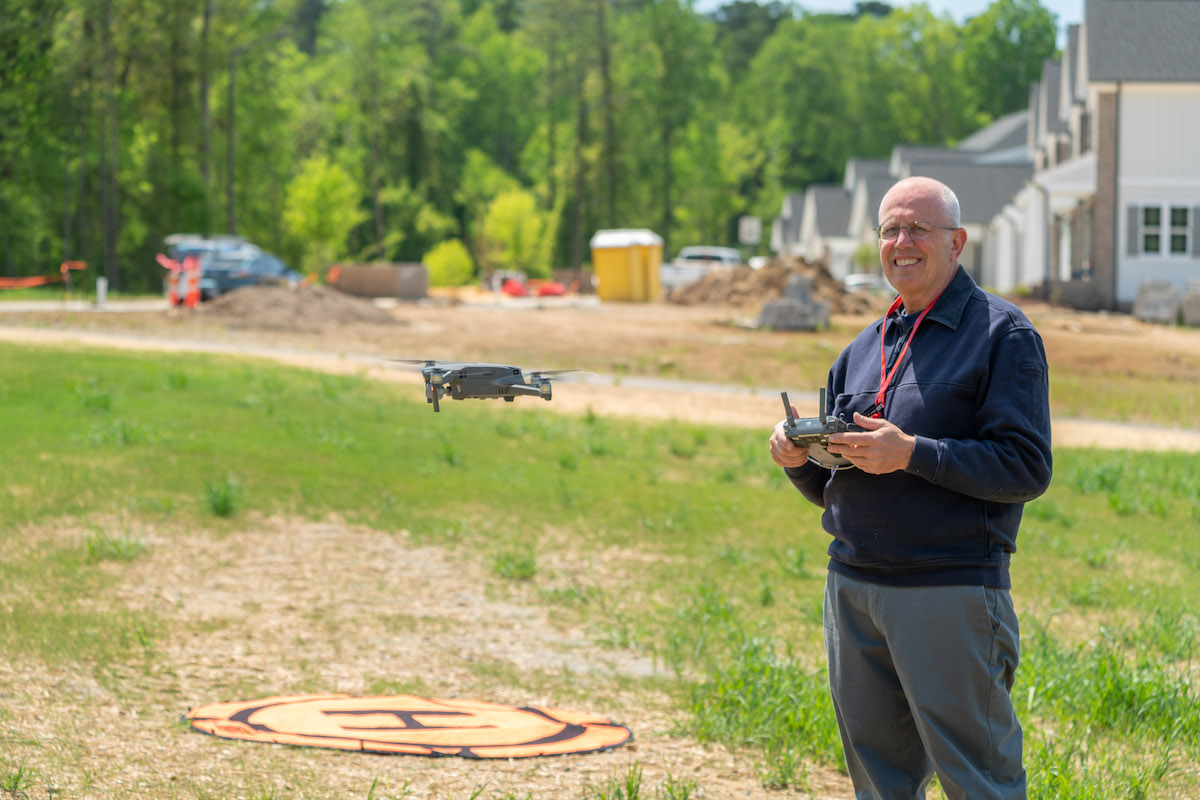
Howard has been flying drones for roughly three years now, having rolled them into the operations of his photography business. A retired firefighter, Howard has been impressed with the quick integration of drone technology into public safety. Just as he was getting out of the firehouse, drones were coming in. So he uses them instead for marketing images, mostly.
“I’m just astounded by how much savings drones can actually provide,” he said. “It lets me get a lot of photographs I never could with a ground-based camera, whether hiking for a scenic photo or doing videos for a roofing job.”
Operation Last Mile was actually Howard’s first work with DroneUp, as he only joined recently. The work was no joke, either.
“In a lot of senses, what we did two weeks ago, many of those situations are the hardest flying I’ve ever done,” he said. “I’d never flown outside my line-of sight, I’d never flown at night. I view those challenging flights as a way for me to grow, so I’m always excited for a new opportunity to learn something.”
Howard saw April’s activities as the first steps in an ongoing process of seeing how the technology could be used to meet the country’s needs. He felt as though the parameters set in the exercise were dutifully challenging.
“The part of the goal I thought was the most successful was making the drop points more challenging than they would typically be in reality,” he said. “I thought it made sense. ‘We’re going to make this very difficult, take the best pilots we can find, and make them do it.’”
Paul Jones
DroneUp Callsign: PinnacleEye
Badges: Part 107 Certified
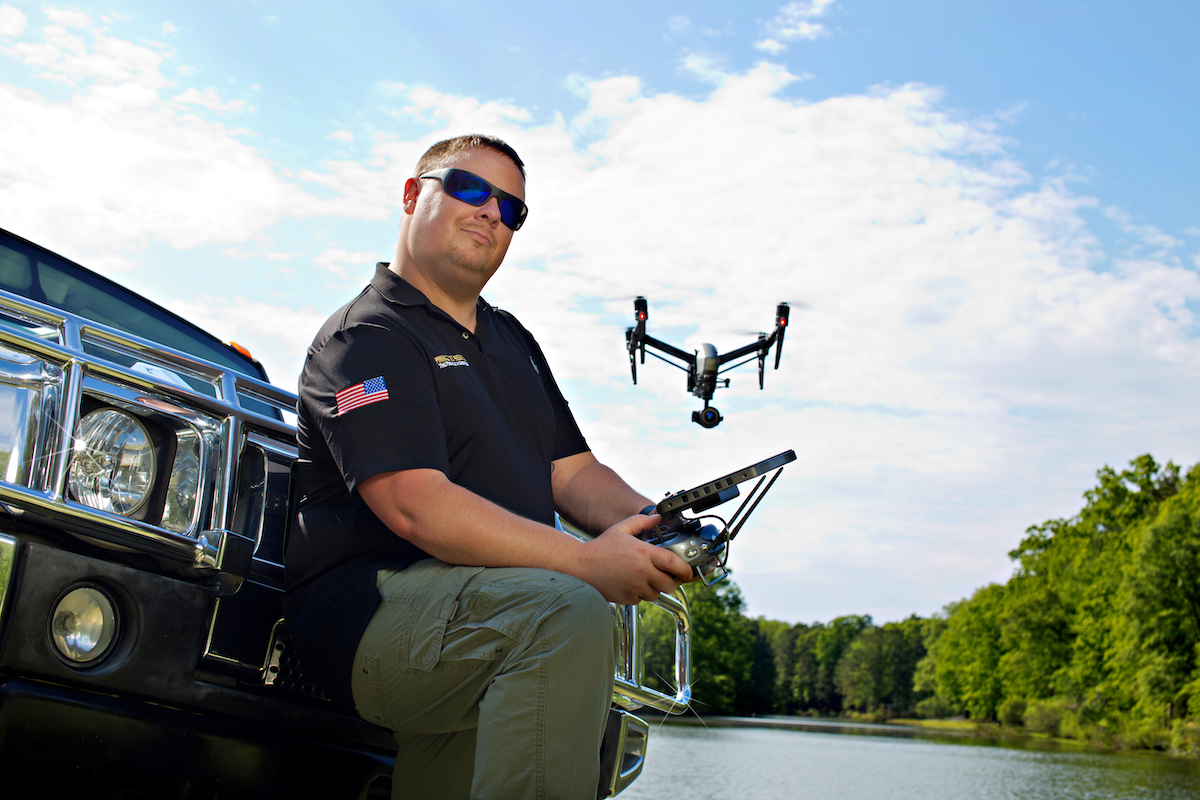
Paul is a longtime drone fanatic, but finally took the leap into commercial drone work in the past two years. His very first job was an opportune one, so in addition to being very entertaining (shooting photos and video for a hot air balloon festival), it also opened many doors for him. He volunteered at a drone expo in North Carolina, meeting more and more people in the industry.
Lately, he’s been primarily shooting marketing imagery with his company, Pinnacle Eye Productions. So when he was invited to Lawrenceville for Operation Last Mile, he jumped at the opportunity to see how drones could be used for something vastly different.
“I knew it was a training scenario, and I saw [DroneUp] had taken the proper precautions in setting up an exercise like this,” Paul said. “I’m always up for a challenge and expanding my skills as a commercial drone pilot.”
Paul had never been to Lawrenceville but described it as “desolate.” He lives in the not-so-distant Angier, North Carolina, similarly remote and “if you sneeze, you’ll miss it.”
“The campus was wild, though,” he said. “It had a lot of topography elements to it: low-range, high-range, tall grass, big trees, powerlines. It was the perfect scenario course, in my opinion.”
DroneUp had to take special precautions to ensure the safety of all present personnel, which included the presence of a nurse who took temperatures and enforced physical distancing.
“[DroneUp] did a great job mitigating risk and taking into consideration everyone’s health,” Paul said. “The nurse did a great job breaking it up, going around with hand sanitizer—it was efficient and proactive. It was very appreciated on my side for taking it seriously.”
Raymond Kilburn
DroneUp Callsign: rayven
Badges: 360 Image, Aerial Inspection, Aerial Mapping, Cinematic Pilot, Drone Registration, Hangar 360, Hangat Autopilot, Insurance Verified, Part 107 Certified, Verifly Member
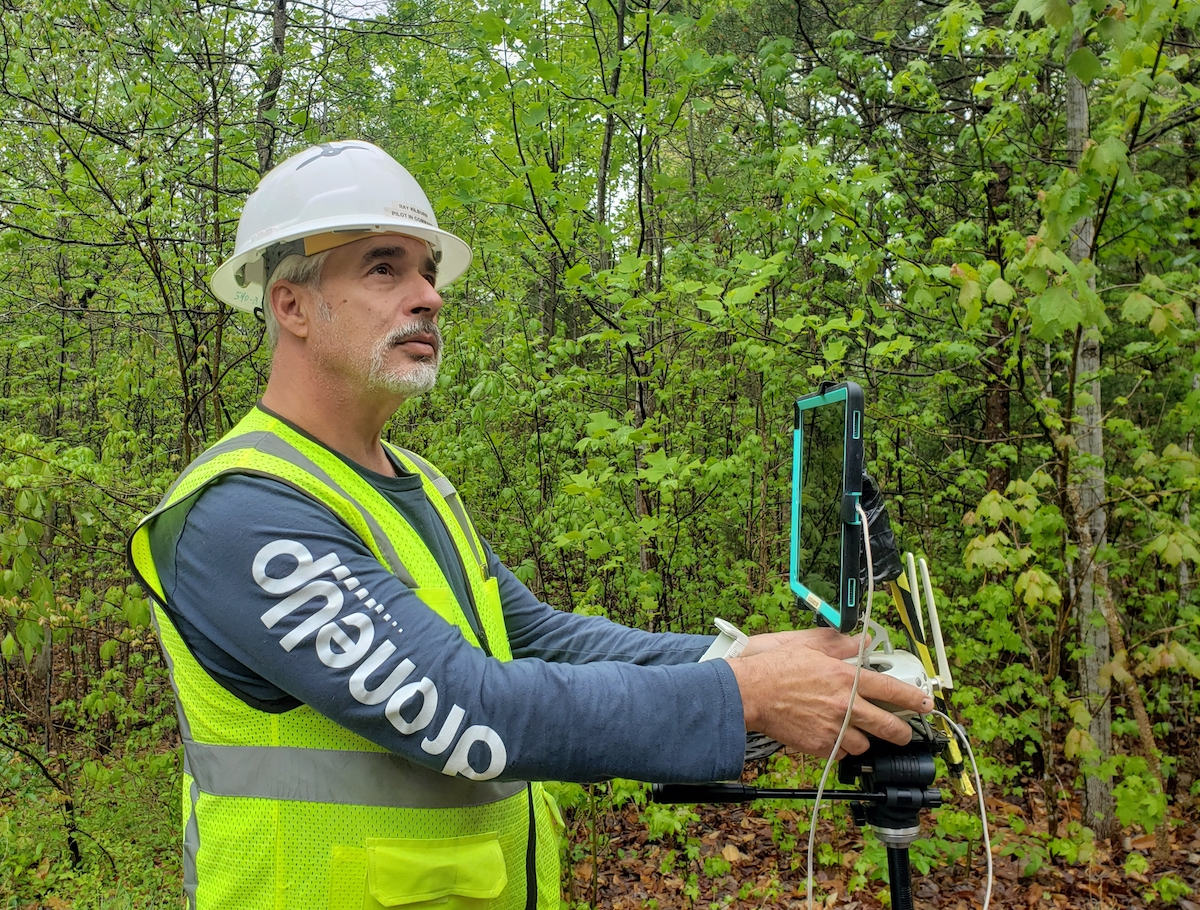
Raymond has a litany of experience at the intersection of drones and public safety, and has been involved in exercises with similarities to Operation Last Mile for several years. When he was tapped by DroneUp to help in Lawrenceville, he quickly accepted the opportunity despite the details of the project being under wraps at that point.
“I was skeptical at first, but I feel the entire exercise was a success,” he said. “I thought it was well-run and well-organized, and I thought that everyone who participated was professional and successful.”
Raymond, like many of the other attendants, was thankful for a chance to be around so many other professional drone operators to see how they work and share knowledge. Being a professional drone operator can come with a heaping portion of solitude, doing many jobs out in remote areas and/or without a team.
“So often we’re alone as pilots, and we got the chance to interact closely with other pilots and I enjoyed that. I learned a lot from my fellow co-pilots, we all learned from each other. Our team came together very quickly in terms of the processes,” he added.
In regards to Operation Last Mile’s findings, Raymond saw value in the outcomes. He saw that residential deliveries with off-the-shelf technology will come with a lot of challenges in relation to line-of-sight and safety. Still, he thinks that exercises like this one are essential in seeing what can be done and what still needs to happen.
Roger Lintz
DroneUp Callsign: skyvid
Badges: Part 107 Certified

While there were a lot of firsts at this event for Roger — first flight at night, first time with a payload—this was not his first time working a regimented exercise. His 31 years in the Army left him more than prepared for the tests at St. Paul’s College, but still he was impressed by the professionalism of his fellow drone operators.
“We all share the same passion, and similar experiences,” Roger said. “It’s what separates a pilot—when you get that license, you all speak the same language and abide by the same rules.”
Roger left the Army following a severe spinal injury and much surgery and care. For two years, he was hardly able to get out of bed. As he put it, “when you’re bedridden you get worse, not better.” His physical therapist told him he should find a hobby that would help his hand-eye coordination and general mindfulness.When he found drones as an option, immediately he thought “That’s it.”
He studied and passed his Part 107 exam, went through several iterations of drones and was picking up odd jobs flying real estate and the like. He was doing most of the work for free. He was happy to be up and moving, and it filled a void left from his days as a private pilot for manned aircraft.
All of this experience intersected in Brunswick County, Virginia, where Roger had an opportunity to apply public safety and aviation to a demonstration before some important people. He admits that he was intimidated, but after a few days on site he had realized the impact of his work.
“It proved that we still have some hurdles to overcome,” Roger said. “But what we were able to do with the deliveries, that was awesome. DroneUp is on the cusp of the future.”
Curtis Marshall
DroneUp Callsign: cfmarshall
Badges: Part 107 Certified

Curtis was actually brought into the drone world through volunteering at his local fire department. This was back when today’s iterations of drones were just beginning to be introduced, but quickly he and his colleagues realized the need for the technology. After a frenzy of internet research, Curtis got his Part 107 and began fleshing out his department’s drone program.
He has a side hustle with the drones too, however, and has been flying construction site surveys, inspections, and the like. That experience in public safety is partly why he was so intrigued by DroneUp’s invitation to participate in Operation Last Mile.
“Initially I thought, ‘How are they going to get everything they need done prior to this?’” Curtis said. “After Joe [Fuller] gave me a brief rundown, I told him ‘I’m in. Whatever you need, I can do. I want to help.’”
Having grown up just a half-hour out of Lawrenceville in Lunenburg County, Virginia, he’d seen St. Paul’s College in its prime. It was strange to him to see it so run down, but he saw it as a great staging area for real-world scenarios.
“To be realistic, I thought we’d have more missed drops than actual drops. I never expected it to be 100 percent perfect,” he said. “I was pleasantly surprised. We hit 25 of 25 targets, with only one abort, and ours was the only team with that issue.”
During all of the tests, there was a single payload that had to be dropped before reaching the target. The wind conditions spun the payload and destabilized the drone. Coordinating with the nearby Air Boss, the team was able to safely drop the package in an unoccupied space near the takeoff area.
During the briefing session, CEO Tom Walker told the teams he “fully expected us to lose a drone out here,” due to the challenges of the tests. DroneUp provided the equipment, and the nature of the exercise put that equipment at risk.
“The way I handled the situation would’ve been the way I handled any situation,” Curtis said. “I firmly believe that if I’m flying someone else’s equipment, I’m responsible for whatever happens to it. I had the mindset that it was my drone. I fly professionally and professionals fly with integrity.”
John Plymale
DroneUp Callsign: johnp
Badges: Part 107 Certified
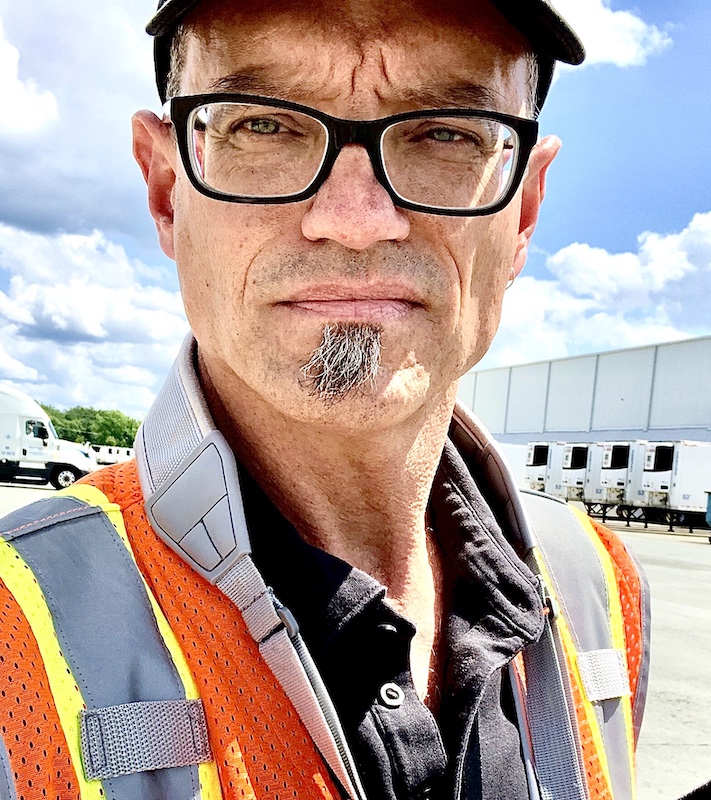
John had his private pilot’s license in his 20s. When he realized his passion for aviation might not become a career, he shifted gears and started a family. For 25 years John worked as record producer and recording engineer, a career he loved. After such a long time, though, he wasn’t being challenged anymore. Always, he’d hoped to get back into aviation.
Five years ago, he got back into it—this time with a controller instead of a cockpit. His company, Ewe Av, runs the gambit in terms of drone services offered. Most of his work revolves around cartography and engineering, e.g. generating terrain models for solar farms to determine their output capabilities. Delivery was not his specialty.
“Package delivery is not something I had much experience with,” John said. “I was excited even though I didn’t totally know what we were going to be doing.”
He wasn’t the odd one out in that regard by any means. Many of the pilots had little-to-no experience dropping payloads. That might’ve been partly why there was good chemistry among them.
“I got a sense from everyone there that they matched my approach to things. If you see a concept that seems to have merit, you have to get out there and try. You have to be willing to fail,” John said.
The cohesion opened the floor for the drone operators to learn from one another, as well. Having manned pilots (like himself) present, he found it easy to communicate things like procedures and checklists.
“These are the things that make it so your knee-jerk reactions have you do the right thing,” he said. “I apply a lot of those things to flying a drone. In a real airplane, you’re always aware that every single takeoff and every single landing could be a crash if you’re not constantly asking things like ‘Is there fuel in the tank?’”
Tommy Turner
DroneUp Callsign: gofastpro
Badges: Night Training, Litchi, NC Operator, Drone Registration, FEMA ICS 100, 200, 700 and 800, R.C.P., Verifly Member, Part 107 Certified, Daylight 107.29, DJI Expert, DJI Intermediate, DJI Pro, Airdata Intermediate, Airdata Expert, Airdata Pro, 360 Image
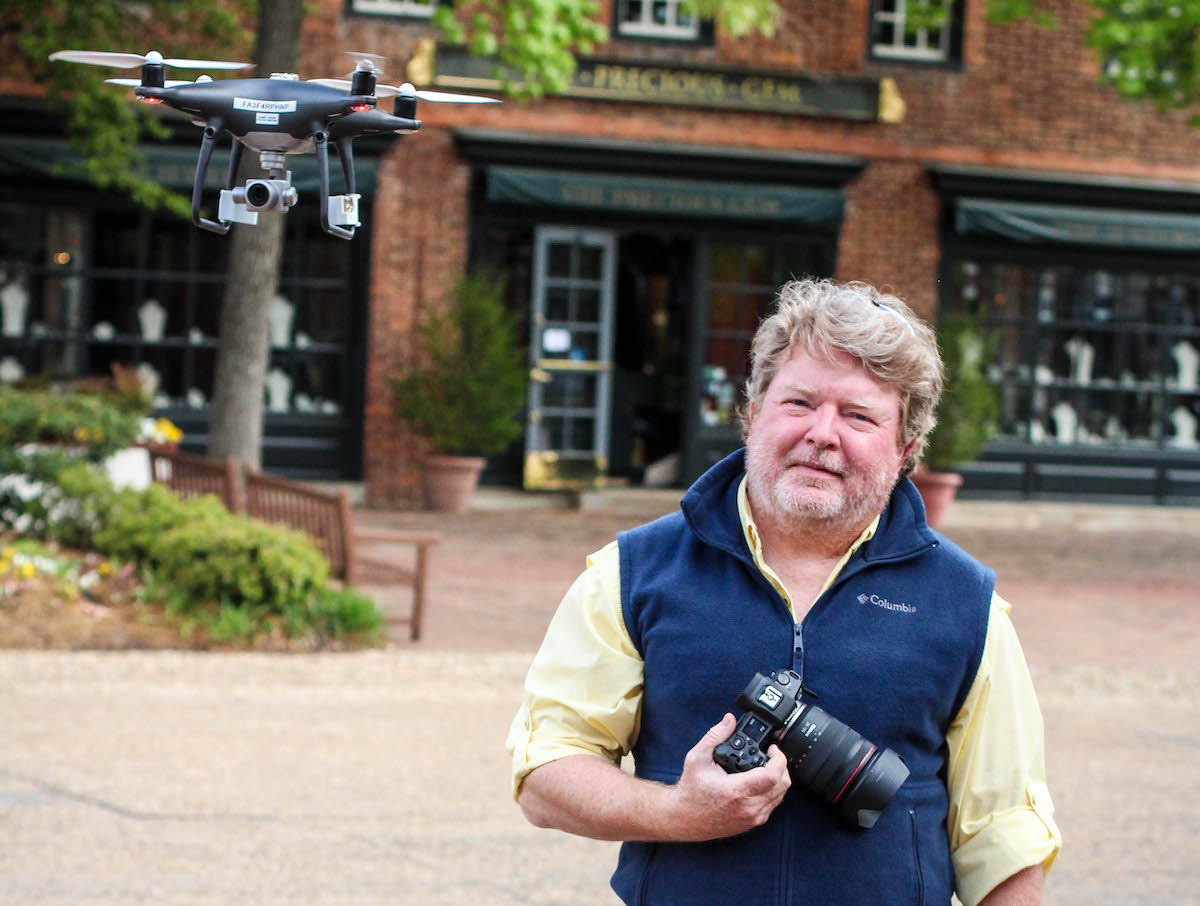
Tommy probably couldn’t have imagined when he got his private pilot license in 1985 that, two decades later, instead he’d be on the ground flying quadcopters. That pilot’s license is actually what helped him early on in getting his Section 333 exemption back in what he describes as “the wild west of drones.”
After 30 years of working in financial services software, he began working as his own one-man production company shooting photography and video, editing, 3D modeling and VR. Drones wove their way into his work, though, and soon he was replacing dolly and trucking shots with drones and getting those signature aerial angles.
Never, though, had he done anything like Operation Last Mile. He leapt at the chance.
“I kind of begged in my response,” Tommy said. “I told them, ‘Although I don’t have many hours on the Inspire, I’m willing to work hard to meet the requirements.’”
Once he’d reached the campus, he was thankful for the organization despite the scope of the operation. He said that DroneUp succeeded in “keeping the cats corralled,” and that the goals had never “neglected from any attention deficit you can get in a exercise of that size.”
Stay tuned for more installments of our Drone Jobs series, as we highlight some of our best pilots and the missions they fly.
